In today’s fast-paced and technology-driven world, capturing attention and conveying information has taken on new dimensions. Visual displays play a pivotal role in modern businesses, and at the forefront of this revolution is LED technology.
In this article, we’ll explore the fascinating world of LED window display screens, shedding light on what they are, how they work, and why they have become indispensable tools for businesses in various industries.

- Brief Explanation of LED Technology
The Light Emitting Diode, or LED, is a wonderful piece of technology that makes LED window display screens work. LEDs are small devices made of semiconductors that light up when an electric current flows through them. LEDs use much less energy than standard electric lights because they don’t need to heat a wire to make light. Because of this technology, lighting and display systems have changed, making screens better, more lively, and last longer.
- Importance of Visual Displays in Modern Business
Businesses have always used visual communication as a strong way to attract and keep the attention of their target audience.
In the digital age, this importance has only grown. Visual displays serve as the first point of contact between businesses and potential customers, conveying crucial information, creating brand identity, and leaving a lasting impression. Businesses must utilize eye-catching and informative displays to stand out in a world bombarded with information.
- Overview of LED Window Display Screens
Among the various visual display options available, LED window display screens have emerged as a cutting-edge solution that combines technology, aesthetics, and functionality. These screens are designed to be placed in windows or storefronts, making them visible to passersby day and night. LED window display screens have several key components, including LED modules, control systems, and power supplies, which work together to create dynamic, attention-grabbing visuals.
As we read more of this piece, we’ll look at the intricacies of LED window display screens, their applications across different industries, their benefits to businesses, and insights into choosing the right display for your specific needs. Whether you’re a retailer looking to entice customers, an organization aiming to communicate vital information, or an artist seeking to express creativity, LED window display screens have something unique to offer, andThis article will tell you everything you need to know.
- Understanding LED Technology
- Explanation of LED (Light Emitting Diode)
To understand how amazing LED window display screens are, you need to know what LED, which stands for Light Emitting Diode, is and how it works. A light-emitting diode, or LED, is a device made of semiconductors that lights up when an electric current flows through it.
Unlike traditional incandescent or fluorescent lighting, LEDs do not rely on heating a filament or gas discharge to produce illumination. Instead, they operate on the electroluminescence principle, where electrons’ movement within the semiconductor material generates photons – the particles of light.
LEDs’ efficiency in converting electrical energy into visible light sets them apart. This efficiency results in several key advantages that make LED technology the backbone of modern display systems.
- Advantages of LED Technology
- Energy Efficiency
One of the most notable advantages of LEDs is their exceptional energy efficiency. Traditional lighting sources like incandescent bulbs waste a significant portion of energy as heat. In contrast, LEDs produce minimal heat, with almost all the input energy converted directly into light. This efficiency reduces electricity bills for businesses using LED window display screens, making them a sustainable choice for long-term use.

- Longevity
LEDs have an impressive lifespan compared to traditional lighting sources. They can last tens of thousands of hours and, in some cases, even longer. This longevity reduces the frequency of replacements, saving both time and money for businesses. In the context of LED window display screens, this means years of uninterrupted operation and vibrant visuals.
- Brightness and Clarity
LEDs are renowned for their brightness and clarity. They produce intense, focused light that is well-suited for display applications. This feature ensures that content displayed on LED window screens remains vivid and easily visible, even in outdoor environments with high ambient light.
- Customizability
LEDs are available in various colors and can be individually controlled. This level of customizability allows for creating dynamic, eye-catching visuals that can adapt to different occasions, promotions, or artistic expressions. Whether displaying vibrant product images in a retail setting or creating captivating art installations, LED window display screens offer versatility in design.
- How LEDs Work
The operation of an LED is based on the interaction of semiconductor materials. When an electrical voltage is applied to an LED, it creates an electron-hole pair within the semiconductor. As electrons recombine with holes in the material, energy is released as photons, producing light. The color of the light emitted depends on the specific semiconductor material used in the LED.
In LED window display screens, thousands of individual LEDs are organized into modules. These modules work in unison to create the desired images or text. The control system behind the screen manages the intensity and timing of each LED, resulting in a seamless and visually stunning display.
Understanding the inner workings of LEDs helps businesses appreciate their reliability, efficiency, and adaptability for various display purposes. As we further explore LED window display screens in this article, you’ll discover how these qualities make them ideal choices for businesses looking to make a visual impact and engage their audience effectively.
The Evolution of Window Displays & led window display screen
- Historical Background of Window Displays
Window displays have a rich history that predates the modern LED technology we know today. They have been a staple of retail and public spaces for centuries, dating back to the storefronts of ancient markets and bazaars. These early displays often consisted of physical objects, such as goods or mannequins, arranged to entice passersby.
In the 19th century, window displays took a more formalized and artistic approach. Department stores and boutiques in cities like Paris and New York began using elaborate window arrangements to showcase their products. These displays aimed not only to attract customers but also to convey a sense of luxury and style.
- Transition from Static to Dynamic Displays
The transition from static to dynamic window displays marks a significant turning point in the history of visual merchandising. Static displays, while visually appealing, were limited in their ability to engage and communicate with the audience. This limitation led to dynamic displays, where movement and interactivity became key elements.
Early forms of dynamic displays incorporated mechanical elements, such as rotating platforms and moving parts, to create eye-catching visuals. However, these displays could have been more convenient and limited in their capabilities.
The true revolution came with the advent of LED technology. LEDs allowed for the creation of dynamic and interactive displays that were not only visually striking but also highly versatile. LED window display screens could easily change content, adapt to different promotions or seasons, and capture the attention of passersby in innovative ways.
- Impact of Technology on Window Displays
Technology has changed the world in a big way.
evolution of window displays. LED window display screens, in particular, have profoundly impacted how businesses showcase their products and convey their brand messages. Here are some key ways technology has influenced window displays:
- Enhanced Visibility: LED displays are exceptionally bright and clear, visible even in direct sunlight. This has expanded the possibilities for businesses to attract and engage potential customers, regardless of the time of day or weather conditions.
- Real-time Updates: LED technology allows for real-time content updates. Businesses can instantly change their displays to promote new products, sales, or events, ensuring their messaging remains relevant and timely.
- Interactivity: Some LED window display screens offer interactive features, allowing customers to engage with the display through touch or gestures. This level of interactivity enhances customer engagement and provides valuable insights into consumer behavior.
- Energy Efficiency: LED technology’s energy efficiency aligns with modern sustainability goals. Businesses can reduce their environmental footprint while still achieving impactful displays.
The impact of technology on window displays continues to evolve, with advancements such as transparent displays and augmented reality experiences reshaping how businesses connect with their audiences. As we delve deeper into the world of LED window display screens in this article, you’ll gain a greater appreciation for the role of technology in modern visual merchandising and communication strategies.
- What is an LED Window Display Screen?
- Definition and Basic Characteristics
An LED window display screen is a cutting-edge visual communication tool that utilizes light-emitting diode (LED) technology to display dynamic and captivating visuals in windows or storefronts. These screens are designed to capture the attention of passersby, convey information, and promote products or services. LED window display screens are known for their exceptional brightness, clarity, and energy efficiency, making them a great choice for businesses in many different fields.

Key characteristics of LED window display screens include:
- Vivid Visuals: LED screens produce vibrant, high-resolution images and videos easily visible even in well-lit environments.
- Customizability: These displays can be tailored to showcase a wide range of content, from advertisements and promotions to art installations and informational messages.
- Versatility: LED window display screens are versatile, suitable for indoor and outdoor use, and adaptable to various display requirements.
- Real-time Updates: Businesses can update content in real-time, ensuring that their displays remain relevant and engaging.
- Components of an LED Window Display Screen
To understand how an LED window display screen works, it’s essential to grasp its core components:
- LED Modules
LED modules are the building blocks of the display screen. These modules consist of numerous individual LEDs arranged in a grid. Each LED module is responsible for emitting a specific light color, and together, they create the full-color spectrum. These modules are carefully calibrated to produce consistent and uniform visuals across the display.
- Control Systems
Control systems serve as the brains of the LED window display screen. They manage the LEDs’ content, timing, and intensity to create the desired visuals. Modern, highly sophisticated control systems can handle complex tasks like video playback, animations, and interactivity. Businesses can remotely control and schedule content updates, allowing real-time adjustments to promotions or events.
- Power Supply
The power supply ensures the LED modules receive the necessary electrical energy. LED window display screens are designed to be energy-efficient, but they still require a stable power source. The power supply unit converts standard electrical power into the voltage and current required to drive the LEDs.
- Types of LED Window Display Screens
LED window display screens come in various configurations to suit different needs and environments. Here are some common types:
- Indoor vs. Outdoor
- Indoor LED Window Displays: These are designed inside buildings, such as shopping malls, museums, and conference centers. They are often smaller and have lower brightness levels than outdoor screens.
- Outdoor LED Window Displays: Built to withstand harsh weather conditions, outdoor screens are larger and much brighter. They are commonly used in outdoor advertising, building facades, and sporting events.
- Fixed vs. Portable
- Fixed LED Window Displays: These are permanently installed and integrated into the architecture of a building or a structure. Fixed displays are suitable for long-term branding and information dissemination.
- Portable LED Window Displays: These screens are designed to be mobile and flexible. They can be easily transported and set up at different locations, making them ideal for events, trade shows, or temporary promotions.
- Single Color vs. Full-Color
- Single-Color LED Window Displays: These displays use a single color, typically red or amber, and are well-suited for conveying simple messages or information. They are commonly used for basic text or numeric displays.
- Full-Color LED Window Displays: Full-color displays combine red, green, and blue LEDs to create a wide spectrum of colors. They can display high-definition images and videos, making them suitable for advertising and artistic displays.
Understanding the different types and components of LED window display screens is crucial for businesses when selecting the right display for their needs. Whether enhancing the visual appeal of a retail store or delivering important information to the public, LED window display screens offer versatility and impact in various contexts.
- Applications of LED Window Display Screens
LED window display screens have various applications across various industries due to their versatility, visual impact, and adaptability. Here, we explore how businesses and organizations leverage these screens for different purposes:
- Advertising and Marketing
- Retail Stores
Retailers have embraced LED window display screens as powerful tools to capture shoppers’ attention. These screens are strategically placed in storefront windows to showcase products, promotions, and branding messages. In retail, first impressions matter, and LED screens allow for dynamic, eye-catching displays that can quickly convey the essence of a brand or highlight seasonal offers.
- Restaurants
Restaurants and eateries use LED window display screens to create an inviting atmosphere and communicate their menus and daily specials to potential diners. The screens can display high-quality images of dishes, drink specials, or even live footage of the culinary process. This visual appeal helps restaurants stand out in crowded urban environments.
- Events and Exhibitions
LED window display screens are a common sight at events and exhibitions. They serve as interactive information hubs, providing event schedules, maps, and real-time updates. Additionally, they can display promotional content for sponsors or exhibitors, enhancing the overall experience for attendees.
- Information and Communication
- Real-time Updates
LED window display screens excel at delivering real-time information to the public. These screens display departure and arrival times, gate changes, and travel advisories in transportation hubs like airports and train stations. Similarly, they update public transportation schedules and routes in busy urban areas, helping commuters plan their journeys efficiently.
- Public Announcements
Municipalities and government organizations use LED window display screens to disseminate important public announcements and emergency alerts. These screens can convey information regarding weather alerts, traffic advisories, public safety messages, and community events. The visual nature of LED displays ensures that critical information is easily noticed and understood.
- Entertainment and Aesthetics
- Art Installations
The creative possibilities of LED window display screens extend beyond marketing and communication. Artists and designers use these screens to create captivating art installations that interact with the environment and engage viewers. LED screens can be programmed to display intricate patterns, animations, and dynamic visuals, transforming public spaces into immersive art experiences.
- Visual Enhancements for Buildings
Architects and building owners integrate LED window display screens into the facades of buildings to enhance their visual appeal and make a bold architectural statement. These screens can display dynamic patterns, abstract art, or synchronized light shows contributing to the structure’s aesthetics. Additionally, they can serve as interactive elements during special events or celebrations.
LED window display screens can be used in many different ways, which shows how adaptable and useful they are in many different fields. As technology keeps getting better, companies and groups are coming up with new and creative ways to use screens to get people’s attention, share information, and improve the way the modern world looks.
- Benefits of Using LED Window Display Screens
LED window display screens offer many advantages that make them indispensable for businesses and organizations across various sectors. Here, we delve into these benefits in detail:
- Increased Visibility and Attention
Increased visibility is one of the most compelling advantages of using LED window display screens. Their high brightness and clarity ensure that content remains easily visible even in bright daylight or bustling urban environments. Businesses can effectively capture the attention of passersby, drawing them in with dynamic visuals and vibrant colors. This enhanced visibility leads to greater foot traffic and increased sales and brand recognition.
- Flexibility in Content Management
One of the standout features of LED window display screens is their flexibility in content management. Businesses can easily customize and update the displayed content to align with their goals and current promotions. This real-time adaptability allows quick responses to changing market conditions, seasonal events, or special occasions. Content can be scheduled to automatically switch between different messages, ensuring that the display remains engaging and relevant.
- Cost-Effectiveness in the Long Run
Even though an LED window display screen may seem like a big expense at first, it is clear that it will save money in the long run. LED technology is known for how well it uses energy, which saves a lot of energy over time. LEDs last longer than traditional lights, so you don’t have to change them as often or pay for upkeep. Also, being able to change material online cuts down on the cost of writing and putting up real ads.

- Environmental Benefits
The adoption of LED window display screens aligns with environmental sustainability efforts. LED technology consumes less energy, reducing carbon emissions and electricity bills. Additionally, their long lifespan means fewer discarded displays in landfills, contributing to reduced electronic waste. Businesses can actively participate in eco-friendly practices and enhance their corporate responsibility image by choosing LED screens.
- Enhanced Aesthetics and Branding
LED window display screens can be seamlessly integrated into architectural designs, enhancing the overall aesthetics of buildings and storefronts. They allow for creative and visually appealing presentations, enabling businesses to express their unique brand identity. The power to show pictures, movies, and text with a high quality.
Animations fosters a modern and engaging atmosphere, making a lasting impression on customers.
Furthermore, LED screens reinforce brand consistency by faithfully reproducing marketing messages and visuals. This consistency strengthens brand recognition and fosters a sense of reliability among consumers.
In summary, the benefits of using LED window display screens extend far beyond their visual appeal. They encompass improved visibility, adaptability, cost savings, environmental responsibility, and enhanced branding. As businesses and organizations continue to seek innovative ways to connect with their audiences, LED window display screens remain essential for achieving these goals effectively and efficiently.
- How to Choose the Right LED Window Display Screen
It is important to choose the right LED window display screen for your needs. Consider the following things and look at case studies of great applications to make a good choice:
- Factors to Consider
- Location and Environment
Location and environmental conditions are pivotal in determining the type of LED window display screen you should choose. Consider the following:
- Indoor vs. Outdoor: Determine whether your screen will be indoors or outdoors. Outdoor screens require higher brightness levels and weatherproofing to withstand exposure to elements like rain, sunlight, and extreme temperatures.
- Lighting Conditions: Assess the ambient lighting in the vicinity of the display. If the area is well-lit, you’ll need a screen with high brightness and anti-glare features for optimal visibility.
- Screen Size and Resolution
Screen size and resolution should align with your display goals and available space:
- Screen Size: Consider the available window or storefront space where the screen will be installed. Please choose a screen size that fits the area without overwhelming it or appearing too small.
- Resolution: Higher resolution screens provide sharper images and text. Determine the viewing distance and select a resolution that ensures clarity and detail for viewers.
- Budget Constraints
Your budget constraints will influence your choice of LED window display screen. Remember that while high-quality screens may have a higher initial cost, they often offer long-term cost savings through energy efficiency and reduced maintenance.
- Total Cost of Ownership: Consider the total cost of ownership, including installation, maintenance, and energy expenses, over the lifetime of the screen.
- Maintenance Requirements
Understand the maintenance requirements associated with the chosen screen:
- Maintenance Frequency: Different screens may require varying levels of maintenance. Some may need periodic cleaning, while others are virtually maintenance-free. Assess the workforce and resources available for upkeep.
- Durability: Consider the screen’s components’ durability, especially if exposed to harsh weather conditions or potential physical damage.
- Case Studies of Successful Implementations
To gain practical insights into choosing the right LED window display screen, examine case studies of successful implementations in similar industries or settings. Analyze how businesses or organizations with similar needs addressed their specific challenges and achieved their objectives.
For example:
- If you’re a retailer, study how other retailers in your niche have used LED displays to boost foot traffic and sales.
- If you’re in the hospitality industry, look at examples of how hotels and restaurants have leveraged LED screens to enhance guest experiences and communicate offerings effectively.
- If you’re a public transportation authority, explore how other transit agencies have utilized LED displays for real-time updates and passenger information.
Case studies can provide valuable insights into best practices, potential pitfalls to avoid, and the ROI (Return on Investment) achieved by others in your industry or context. Learning from successful implementations can guide your decision-making and help you choose the right LED window display screen that aligns with your objectives and budget.
By carefully considering these factors and drawing inspiration from real-world examples, you can make an informed decision when selecting an LED window display screen that meets your immediate needs and contributes to your long-term success.
- Installation and Maintenance
To make sure your LED window display screen works well and lasts as long as possible, you must put it correctly and keep it in good shape. Here, we go into detail about the installation process, give tips for normal upkeep, and talk about how to fix common problems.
- Installation Process
- Site Assessment
Before installation, conduct a thorough site assessment. This involves evaluating the selected location and ensuring it meets the requirements for the chosen LED window display screen. Factors to consider include:
- The structural integrity of the installation site.
- Accessibility for power and data connections.
- Proper ventilation to prevent overheating.
- Line of sight for optimal visibility.
- Compliance with local regulations and permits.
- Mounting and Assembly
Depending on the chosen display type (indoor, outdoor, fixed, or portable), mounting and assembly requirements will vary. Follow manufacturer guidelines and consult with professional installers if necessary. Securely mount the screen, ensuring it is level and stable. Connect power and data cables according to the provided instructions.
- Content Upload and Configuration
After physical installation:
- Upload and configure content on the LED window display screen.
- Connect the screen to the control system and ensure the display functions correctly.
- Verify that content is displayed accurately, with appropriate brightness and resolution settings.
- Regular Maintenance Tips
- Cleaning
So that the screen stays clear and bright, it needs to be cleaned often. Wipe the screen gently with a soft, lint-free cloth. Don’t use rough materials or strong chemicals that could hurt the screen or its covers.
- Software Updates
Keep the program that controls it up to date. Software changes are often put out by manufacturers to improve speed, security, or usefulness. Check for changes often and use them when you need to.
- Visual Inspection
Do eye checks on a regular basis to look for physical harm, weak links, and other signs of wear and tear. Take care of any problems right away so they don’t get worse.
- Temperature Control
Keep the temperature in the work area at the right level. Extreme temps can hurt how well the screen works and how long it lasts. Make sure the monitor has enough airflow and isn’t exposed to direct sunlight or moisture.
- Troubleshooting Common Issues
- Flickering or Dead Pixels
If you see images that flash or don’t work at all, it could mean that something is wrong with the LED modules or the computer system. Check for damage to the links and wires. If the problem keeps happening, call the maker or an expert to find out why and fix it.
- Inconsistent Brightness
Inconsistent brightness across the screen can result from variations in LED module performance or incorrect settings. Adjust brightness settings and perform a calibration if necessary. If the problem persists, consult the user manual or seek professional assistance.
- Content Display Issues
Content display problems can stem from software glitches or compatibility issues. Verify that the content format and resolution match the screen’s specifications. Restart the control system and update the content if needed. If problems persist, contact technical support for assistance.
- Connectivity Problems
Check the cables and connections if the screen experiences connectivity problems, such as a loss of signal or communication errors. Ensure that the power supply is stable and there are no loose cables. If issues persist, consult the control system documentation or seek professional support.
By following proper installation procedures, implementing regular maintenance practices, and having a troubleshooting plan, businesses can maximize the performance and lifespan of their LED window display screens. Effective maintenance ensures the screen’s functionality and contributes to a positive customer experience and the continued success of your visual communication efforts.
- Future Trends in LED Window Display Screens
As technology gets better, LED window display screens are likely to change in big ways. Companies and groups that want to stay on the cutting edge of visual communication should keep an eye on new trends. Here, we talk about the future of LED window display screens, including new technologies, how they can be used with smart technologies, and how they can be made more environmentally friendly.
- Emerging Technologies
- OLED Displays
OLED (Organic Light light-emitting diode) displays are emerging as a visual game-changer. Unlike traditional LED displays, OLED screens do not require a backlight, which allows them to be thinner and more flexible. This flexibility opens up new possibilities for curved and flexible LED window display screens that can be seamlessly integrated into unconventional architectural designs. OLED screens also offer deeper blacks, better contrast ratios, and vibrant colors, enhancing the visual impact of displays.
- Transparent Displays
Transparent LED displays are another exciting development on the horizon. These displays allow for content presentation while maintaining transparency so viewers can see through the screen. Transparent LED screens are anticipated to find applications in retail, where they can overlay information on products or provide interactive shopping experiences without obstructing the view of physical merchandise.
- Interactive Displays
The future of LED window display screens also includes interactive displays that respond to user input. These screens can be equipped with touch-sensitive technology or motion sensors, enabling customers to engage with content directly. Interactive displays have applications in retail, museums, and interactive kiosks, offering immersive experiences and gathering valuable data on user interactions and preferences.
- Integration with Smart Technologies
The future of LED window display screens will continue to be shaped by the trend of integrating them with smart technologies. More and more of these screens will link to the Internet of Things (IoT), which will let them update info in real time and work together with other smart devices. For instance:
- Smart displays in retail could adapt content based on the age, gender, or preferences of customers detected by facial recognition or mobile apps.
- Public transportation LED screens could provide real-time information on bus or train arrivals based on GPS tracking.
- In-building LED screens could sync with climate control systems, adjusting content or brightness based on environmental conditions.
- Sustainability and Energy Efficiency Advancements
Sustainability is a growing concern, and LED window display screens are evolving to be more energy-efficient and sustainable:
- Energy-Efficient Materials: Manufacturers are developing energy-efficient materials for LED screens, reducing power consumption while maintaining brightness and clarity.
- Solar-Powered Screens: Future LED window display screens may incorporate solar panels for self-sufficient energy generation, reducing their environmental footprint.
- Recyclable Components: Manufacturers are exploring ways to make LED screens more environmentally friendly using recyclable or biodegradable components.
- Energy Management Software: Advanced energy management software will optimize power usage, ensuring screens are energy-efficient without compromising performance.
In conclusion, the future of LED window display screens holds exciting possibilities with emerging technologies like OLED displays, transparent screens, and interactive capabilities. Integration with smart technologies will enhance user experiences and provide new ways to engage audiences.
Additionally, a strong focus on sustainability and energy efficiency advancements will align LED screens with eco-conscious practices, making them more environmentally friendly and cost-effective in the long run. Businesses and organizations should stay informed about these trends to leverage the full potential of LED window display screens in the years ahead.
- Conclusion
As we wrap up our exploration of LED window display screens, let’s recap their importance, encourage businesses to consider adopting this technology, and offer final thoughts on the future of visual displays in the digital age.
- Recap of the Importance of LED Window Display Screens
Throughout this article, we’ve underscored the vital role of LED window display screens in modern business and communication. Here’s a brief recap of their importance:
- Capturing Attention: LED screens can capture attention like never before. Their brightness and clarity make them visible in various lighting conditions, ensuring your message effectively reaches your target audience.
- Dynamic Communication: The dynamic nature of LED displays allows for real-time updates, customized content, and interactive engagement. This versatility makes them a versatile tool for conveying information, promoting products, and creating immersive experiences.
- Sustainability: LED technology is not only visually impactful but also environmentally friendly. LED window display screens are energy-efficient, cost-effective in the long run, and can be designed with sustainability in mind.
- Enhanced Branding: These screens allow businesses to enhance their branding efforts, create memorable visual identities, and leave a lasting impression on customers.
- Encouragement for Businesses to Consider Adopting This Technology
To businesses and organizations still deliberating whether to embrace LED window display screens, we offer this encouragement:
- Stay Competitive: In a highly competitive market, standing out is essential. LED window display screens can be your differentiating factor, attracting customers, conveying your message, and boosting sales.
- Adapt to Changing Trends: The digital age is marked by rapid changes and evolving consumer preferences. Embracing cutting-edge technology like LED screens allows you to adapt to these shifts and remain relevant.
- Enhanced Customer Experience: Providing customers with an engaging and visually appealing experience fosters loyalty and encourages repeat business. LED displays can elevate the customer experience to new heights.
- Final Thoughts on the Future of Visual Displays in the Digital Age
As we look to the future, it’s clear that visual displays, including LED window display screens, will continue to evolve and play a central role in communication and marketing. They will integrate more with our daily lives and environments, offering immersive, interactive, and environmentally sustainable experiences.
In this digital age, businesses and organizations that embrace innovative visual communication technologies will be better positioned to connect with their audiences, convey their messages effectively, and thrive in an ever-changing landscape. The future of visual displays holds immense promise, and the possibilities are limited only by our imagination and creativity.
In conclusion, LED window display screens are not just a tool for today but a gateway to the future of communication, branding, and engagement. Embrace this technology, harness its potential, and be part of the exciting journey as we navigate the ever-evolving landscape of visual displays in the digital age.


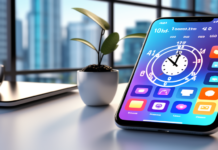










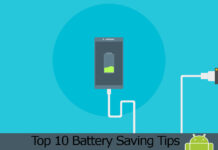






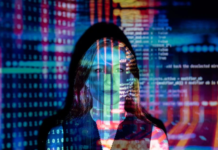

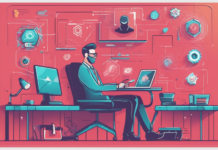








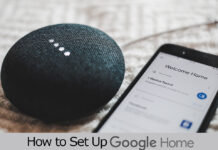




![4 Ways to Hack a WiFi Password on Android in 2023 [No Root] TechSaaz - how to hack a wifi password on android](https://www.techsaaz.com/wp-content/uploads/2019/08/how-to-hack-wifi-on-android-100x70.jpg)


